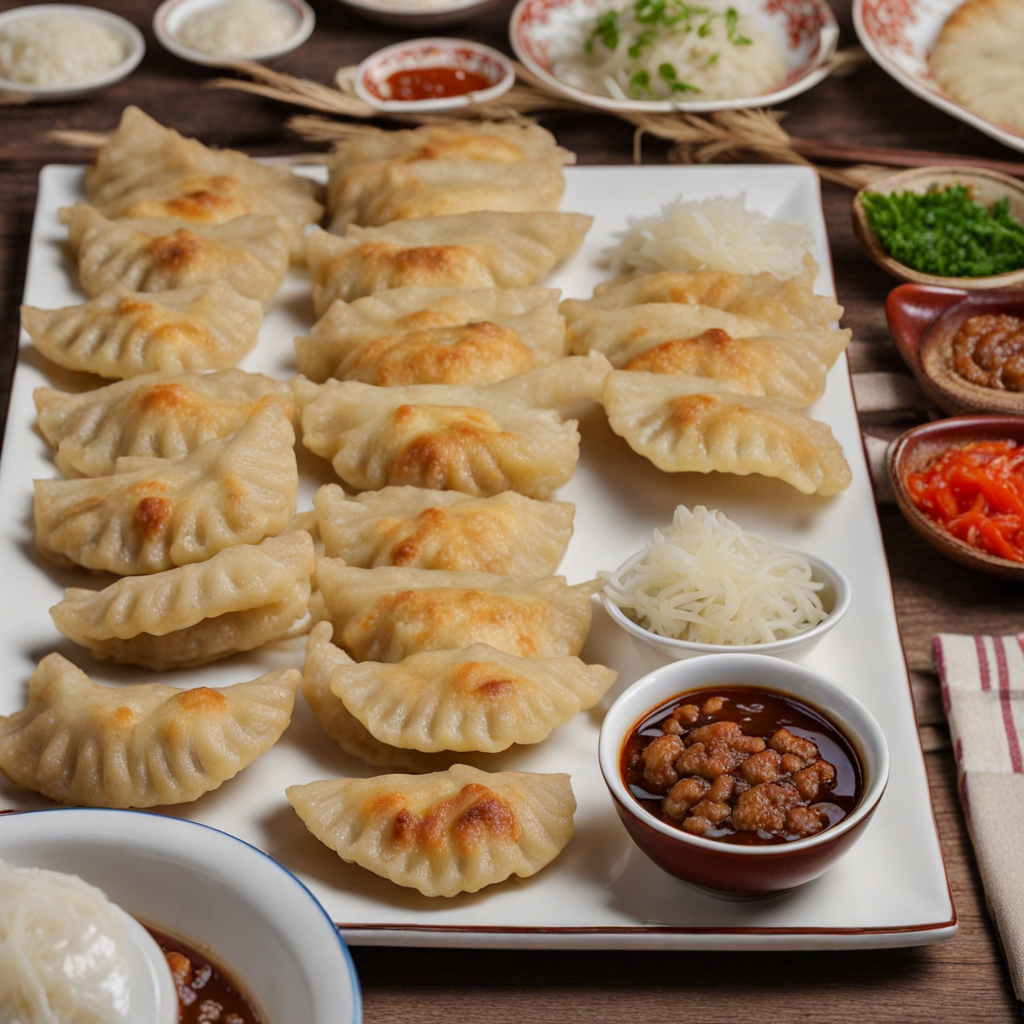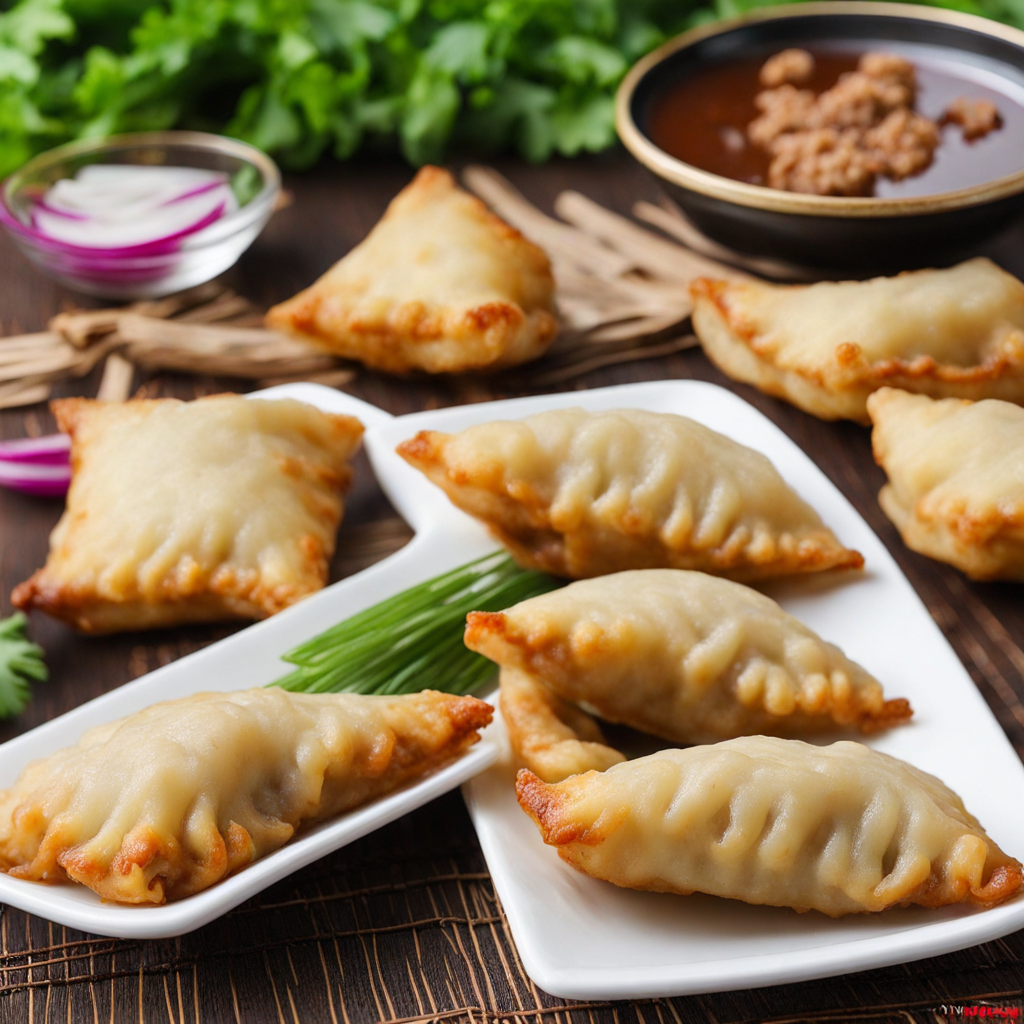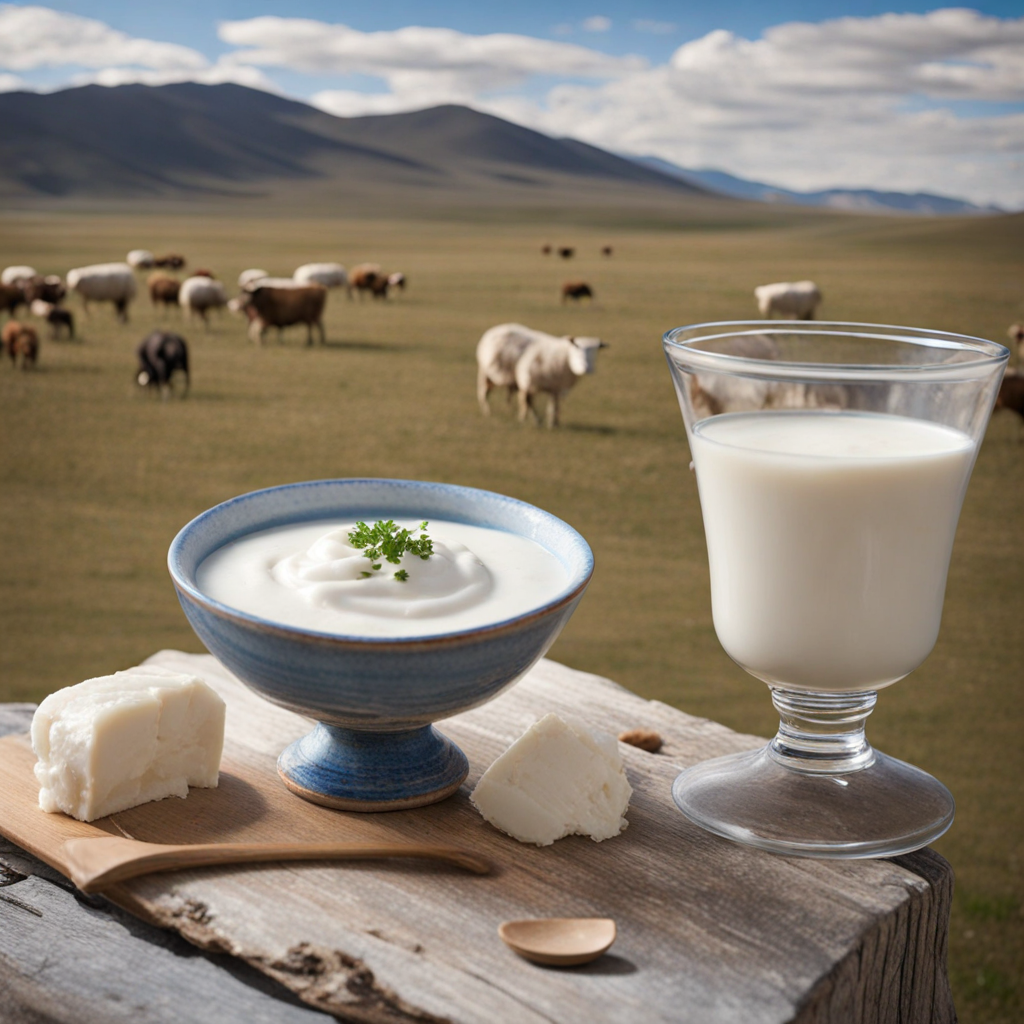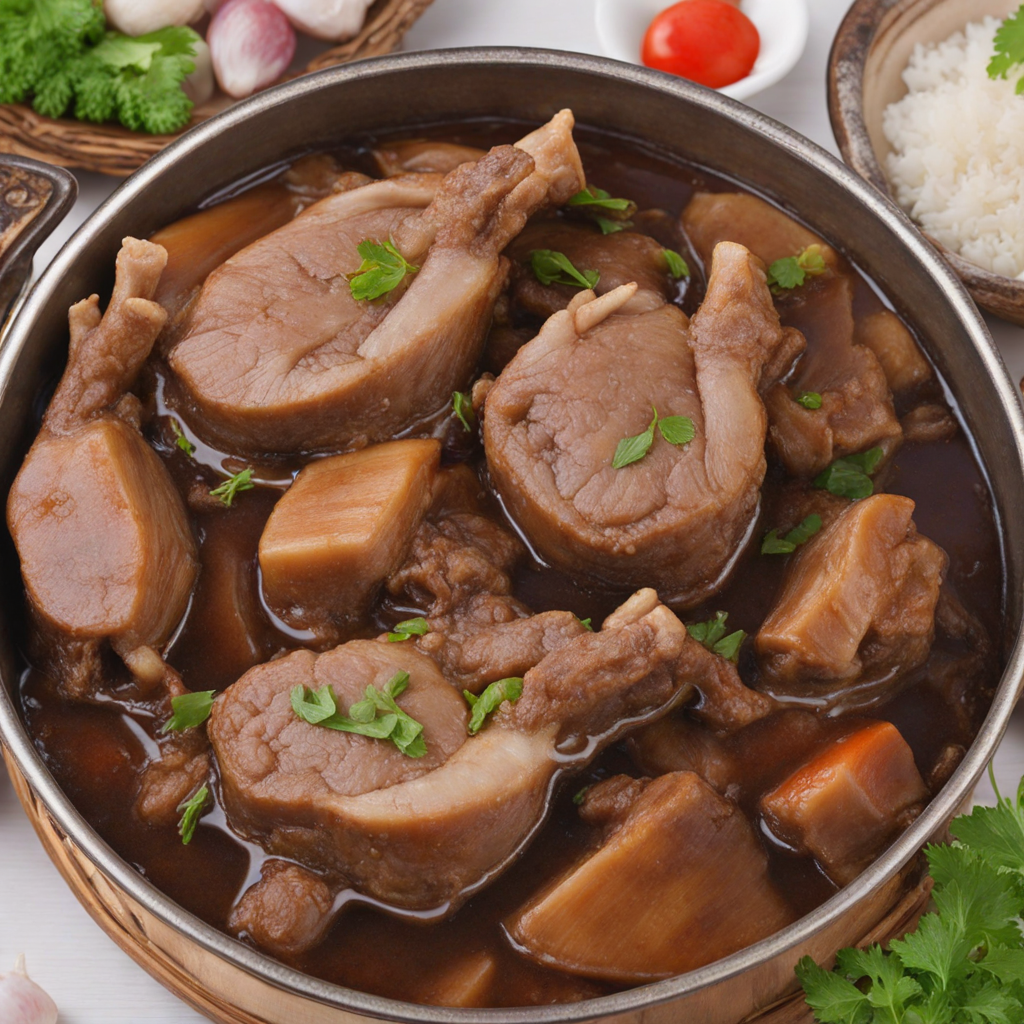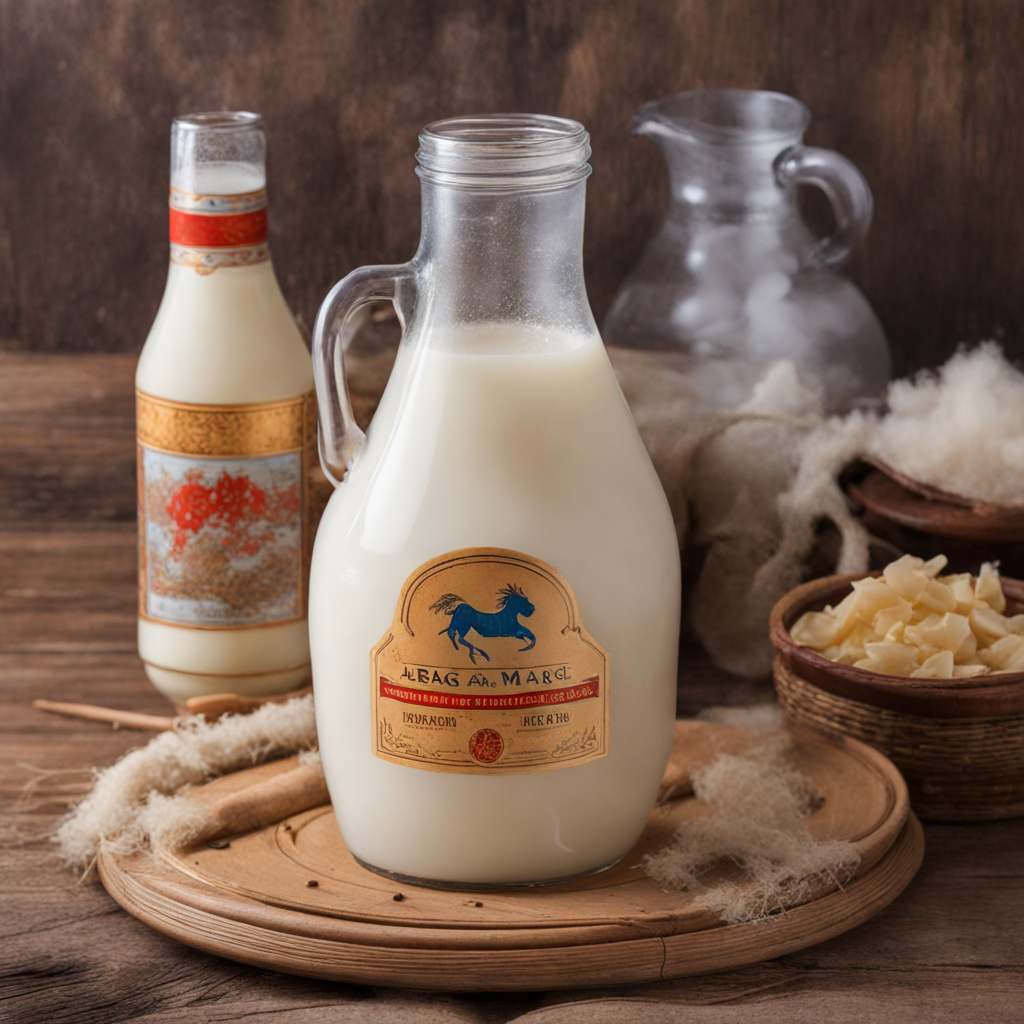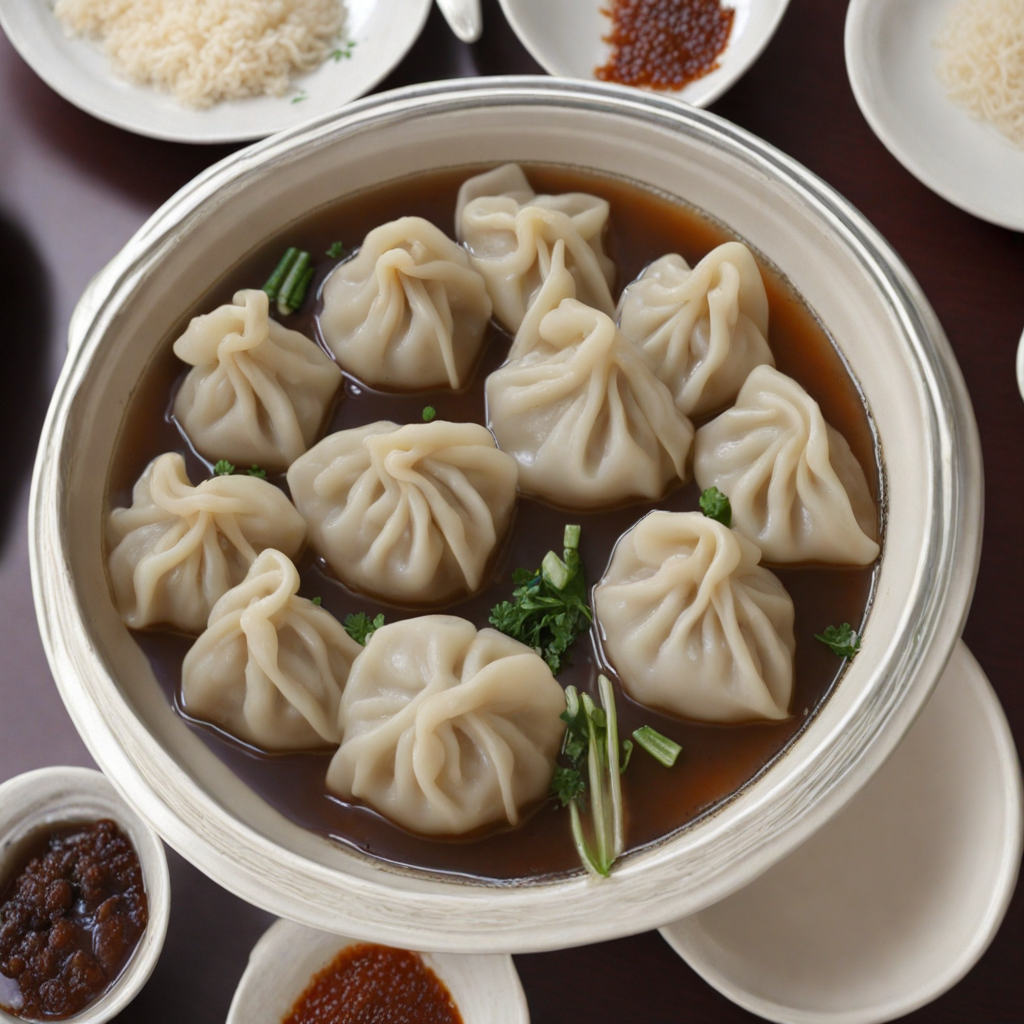Khuushuur
Хуушуур, also known as "khuushuur," is a beloved traditional dish from Mongolia, characterized by its savory filling and crispy exterior. This popular street food exemplifies the nomadic lifestyle of the Mongolian people, reflecting their reliance on livestock and the simplicity of their cooking methods. Khuushuur is essentially a deep-fried pastry, typically filled with minced meat, and it holds a special place in the hearts of many Mongolians, often enjoyed during festivals and gatherings. The history of khuushuur is deeply intertwined with the nomadic culture of Mongolia. Originating from the need for portable, hearty food that could sustain herders on the move, khuushuur has evolved over centuries. Traditionally, it was made with mutton or beef, which are staple meats in Mongolia due to the abundance of livestock. The dish's significance has also grown, becoming a symbol of Mongolian hospitality and a must-try for visitors eager to experience authentic Mongolian cuisine. Khuushuur boasts a unique flavor profile that balances the richness of the meat with the subtle spices used in its preparation. The filling is often seasoned with garlic, onion, and a hint of black pepper, allowing the natural flavors of the meat to shine through. The outer pastry, made from a simple dough of flour, water, and salt, becomes crispy and golden when deep-fried, creating a delightful contrast to the tender, juicy filling. The result is a dish that is both satisfying and comforting
How It Became This Dish
The History of Хуушуур: Mongolia's Beloved Fried Dumpling #### Origin and Etymology Хуушуур (pronounced khuushuur) is a quintessential Mongolian dish that embodies the nomadic spirit and culinary heritage of the Mongolian people. The term "хуушуур" is derived from the word "huushuur," which refers to a deep-fried pastry filled with meat, typically mutton or beef, though variations may include other fillings. The dish is often compared to the more widely known dumplings of East Asia but has its own unique identity rooted in Mongolia's history, geography, and culture. The origins of хуушуур can be traced back to the nomadic lifestyle of the Mongolian people, who have historically relied on livestock for sustenance. As pastoral herders, they developed methods of preserving and preparing meat that would be sustainable in their harsh environment. The practice of making stuffed dumplings likely arose as a practical solution to utilize leftover meat while creating a dish that could be easily transported and cooked over open fires during their migrations. #### Cultural Significance Хуушуур holds a special place in Mongolian culture and is often associated with communal gatherings and celebrations. It is particularly popular during festivals, family reunions, and traditional ceremonies. The preparation and sharing of хуушуур symbolize hospitality and the importance of community, reflecting the deep-rooted values of togetherness and family in Mongolian society. In addition to its role in social gatherings, хуушуур also represents the resilience and adaptability of the Mongolian people. The dish has evolved to incorporate various cooking techniques and ingredients, showcasing the fusion of traditional nomadic practices with influences from neighboring cultures. This adaptability is indicative of the Mongolian people’s ability to thrive in a challenging environment, where resourcefulness is key to survival. #### Ingredients and Preparation Traditional хуушуур typically consists of a thin dough made from flour, water, and salt, which is rolled out and filled with a mixture of finely chopped meat, usually seasoned with salt, pepper, and sometimes onions or garlic. The dumplings are then folded into a half-moon shape and deep-fried until golden brown and crispy. The preparation of хуушуур can be a family affair, with members gathering to roll out the dough, prepare the filling, and fry the dumplings. This communal cooking process not only strengthens family bonds but also passes down culinary traditions from one generation to the next. In urban areas, хуушуур has become a popular street food, with vendors serving freshly fried dumplings to hungry passersby, highlighting its versatility as both a home-cooked meal and a convenient snack. #### Historical Development Over the centuries, the dish has evolved alongside Mongolia's cultural and social changes. The Mongolian Empire, at its height in the 13th century, facilitated extensive trade routes across Asia, including the Silk Road. This resulted in an exchange of culinary practices that influenced the preparation of хуушуур. While the basic concept of a meat-filled dumpling remained, ingredients and flavors began to reflect the diverse influences of neighboring countries. During the 20th century, particularly under Soviet influence during the socialist era, there was a notable shift in food availability and preparation methods. Traditional ingredients were sometimes replaced with more accessible alternatives due to food rationing and supply issues. Despite these challenges, the essence of хуушуур remained intact, with families continuing to make the dish using whatever ingredients were at hand. As Mongolia transitioned to a market economy in the 1990s, the culinary landscape began to diversify once again. Chefs and home cooks alike started experimenting with new fillings, incorporating vegetables and spices that had been less common in traditional recipes. This creativity led to a resurgence in the popularity of хуушуур, as its flexibility allowed it to adapt to modern tastes while retaining its cultural significance. #### Modern-Day Хуушуур Today, хуушуур is celebrated as a national dish, enjoyed by locals and visitors alike. While traditional versions remain popular, contemporary interpretations have emerged, featuring fillings such as cheese, potatoes, and even sweet variations with fruit. The dish continues to be a staple at festivals, such as the Naadam Festival, where it is enjoyed alongside other traditional foods like buuz (steamed dumplings) and airag (fermented mare's milk). Mongolian restaurants around the world have also embraced хуушуур, introducing it to international audiences. This globalization of culinary traditions has not only elevated the status of хуушуур but also allowed for cross-cultural exchanges that enrich the dish's history. Mongolian expatriates often prepare хуушуур as a way to connect with their roots and share their culture with others. #### Conclusion In conclusion, хуушуур is more than just a delicious fried dumpling; it is a symbol of Mongolia's rich cultural heritage and the resilience of its people. The dish encapsulates the essence of nomadic life, communal spirit, and the adaptability of a cuisine that has stood the test of time. As Mongolia continues to navigate the complexities of modernity while honoring its traditions, хуушуур remains a beloved culinary staple that connects generations and fosters a sense of identity among the Mongolian people. Whether enjoyed at a family gathering, a local festival, or a bustling street market, хуушуур is a testament to the enduring legacy of Mongolia's gastronomic history.
You may like
Discover local flavors from Mongolia


